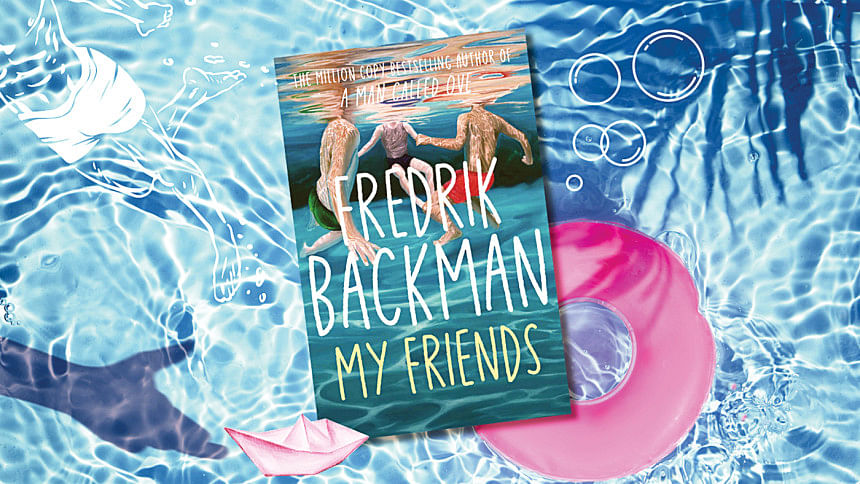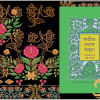Painted in friendship, framed by grief

"Art is empathy," Fredrik Backman writes. So is friendship—the kind that stays with you long after the summer ends.The kind you find when you're 14 and everything is breaking and beginning at once. The kind of friendship that becomes a map back to yourself, years later, when you're lost in grief, guilt, or even just the quiet ache of growing up. Fredrik Backman's My Friends is a love letter to those friendships.
The novel opens with 18-year-old Louisa, a lonely, angry girl drifting through the world after a difficult childhood in foster care. She's an artist—in a way. She understands beauty and more importantly, she understands longing. All she's ever known of the sea is a small, worn-out postcard. It carries an image of a painting called "The One of the Sea", and she has kept it for years, not knowing why. She has never seen the sea in real life. But this painting, this imagined sea, has been her whole ocean.
One day, unable to hold back the ache anymore, she goes to the auction of the painting, to stand in front of it, to really see it, up close. In the swirls of paint, she notices something hidden; three tiny figures painted into the waves. They feel familiar, though she doesn't know why. What follows is part mystery, part pilgrimage, as Louisa sets out to find the painting's origins and the story of the people inside it.
That story takes us back 25 years to a summer in a coastal town, where four teenagers—Joar, Ted, Ali, and a gentle, gifted boy named Kimkim; create a small world for themselves on a forgotten pier. Their homes are broken in different ways, but together, they make something whole. They talk about life, love, and the future. They bicker. They climb and swim and hide and heal. And Kimkim, quietly, paints it all.
The painting becomes a secret diary of that summer, a visual memory of the warmth they gave each other and the weight they carried. Decades later, it's Louisa's compass. And when she finally meets the artist, now living in heartbreaking circumstances, the stories of past and present fold into each other.
One part of the plot that feels a little sudden is Louisa's first meeting with the artist. After all the buildup, her quiet obsession with the painting, the long journey to find him, the moment between them happens very quickly. He seems to trust her almost instantly, convinced in just a few words that she somehow belongs to that painting, to that summer. It's not that the scene lacks emotion, but compared to the slow, thoughtful pace of the rest of the book, this felt a little too quick, almost too easy. It could have been even more moving if their connection had been given more space to grow. Another small thing is how the artist remains unnamed for a large part of the book. Until nearly the last-fifth of the story, he's simply referred to as "the artist." While this might be an intentional choice to keep a sense of mystery, or to hold the reader's attention around the painting itself, it can also create a slight sense of distance, making it harder to feel fully connected to him. Similarly, because the painting is described in fragments across different chapters, it might be difficult for some readers to imagine it clearly as a whole. That, too, could be intentional; like memory, the painting slowly comes into focus.
Still, these are gentle bumps in a story that largely knows where it's going. And by the time it arrives, it does so with softness, clarity, and a deep emotional hum.
Backman writes, "We ache with homesickness without knowing what home is yet. That's all childhood friends are: people stuck on the same island. If you find a single one of them, you can cope with almost anything." This is where My Friends really lives; not just in the dual timeline or the soft mystery behind a painting, but in this aching homesickness. That feeling of being 14, of wanting to stay 14, because everything after that becomes too complicated. As Ted says at one point: "Everyone should be allowed to be fourteen for far longer than a year. There are so many other ages we could skip instead. Thirty-nine, for instance." Backman treats that idea with tenderness. He doesn't romanticise pain, but he honours how much it means to be seen, especially in youth. He reminds us that when we're young, we build versions of ourselves through the people around us. And if we're lucky, those people never really leave.
This novel is for anyone who's ever longed for a place, a person, a time that felt like home even if they didn't know it then. It's gentle, funny, a little sad, and full of heart. Like all good friendships, it stays with you. And maybe we won't all connect directly with the lives in this novel—the artist without a home, the teenager who's never seen the sea, but we'll recognise the feeling. The ache of growing up. The joy of being seen. The kind of friendship that holds your memories when you no longer can.
So this is for all the friends. All the good friendships we've made along the way. The ones who were there in the summers when we didn't yet know how life would change, or what it might throw at us. The ones who, even now, feel like home.
Mahmuda Emdad is a women and gender studies major with an endless interest in feminist writings, historical fiction, and pretty much everything else, all while questioning the world in the process. Reach out at [email protected].

 For all latest news, follow The Daily Star's Google News channel.
For all latest news, follow The Daily Star's Google News channel. 








Comments